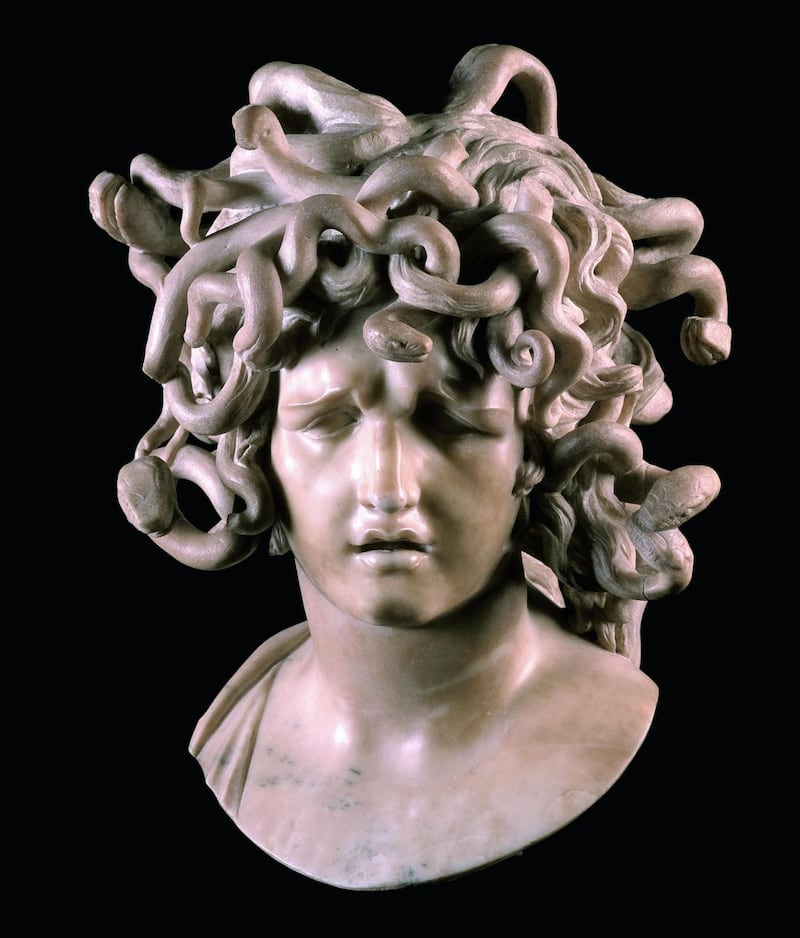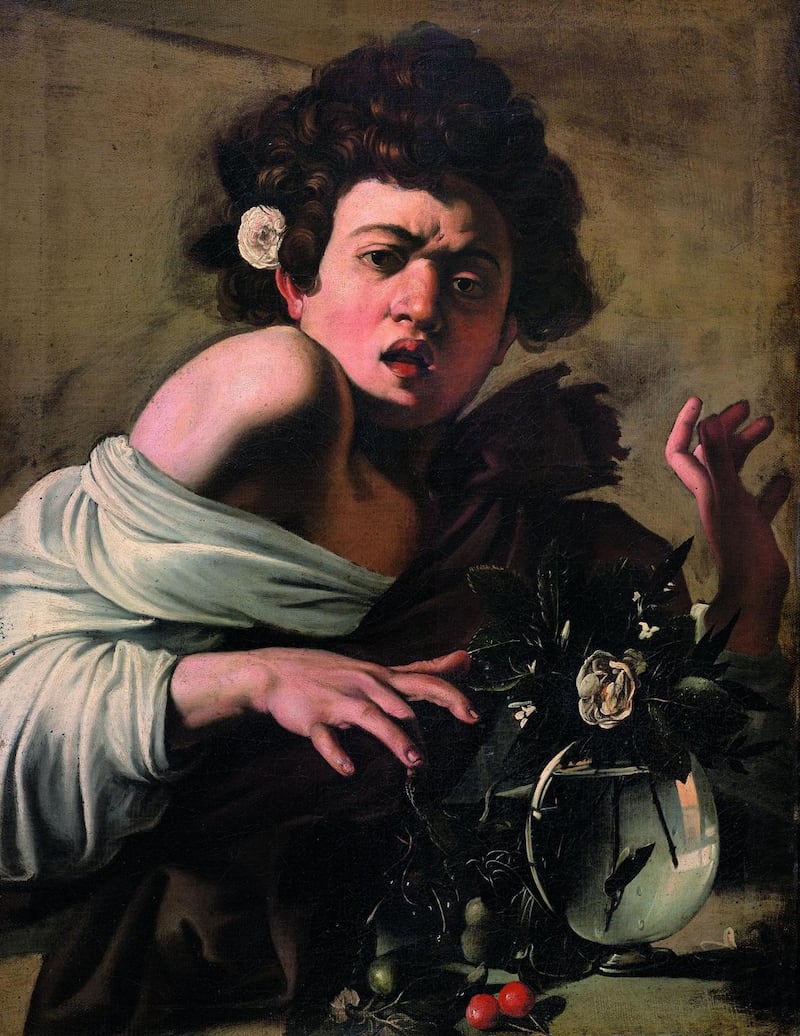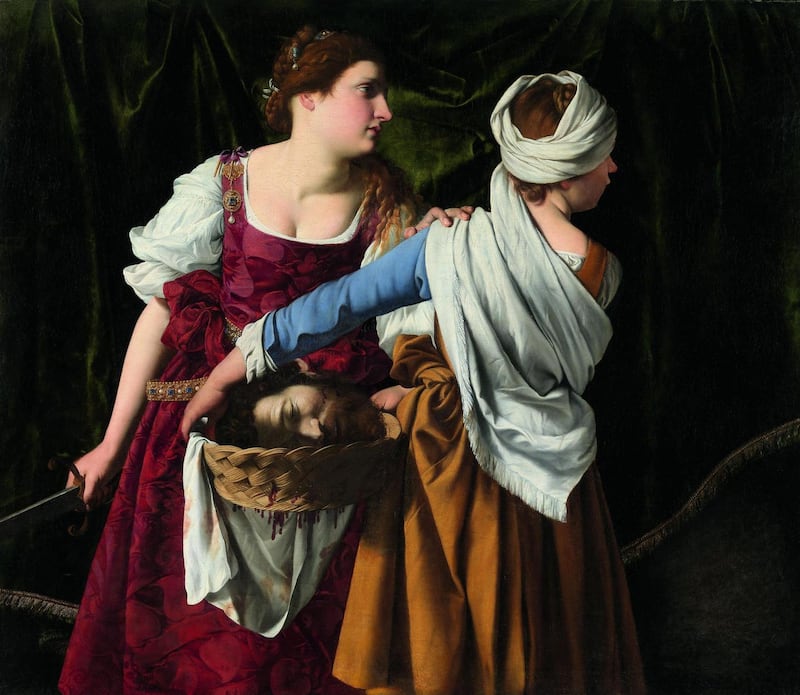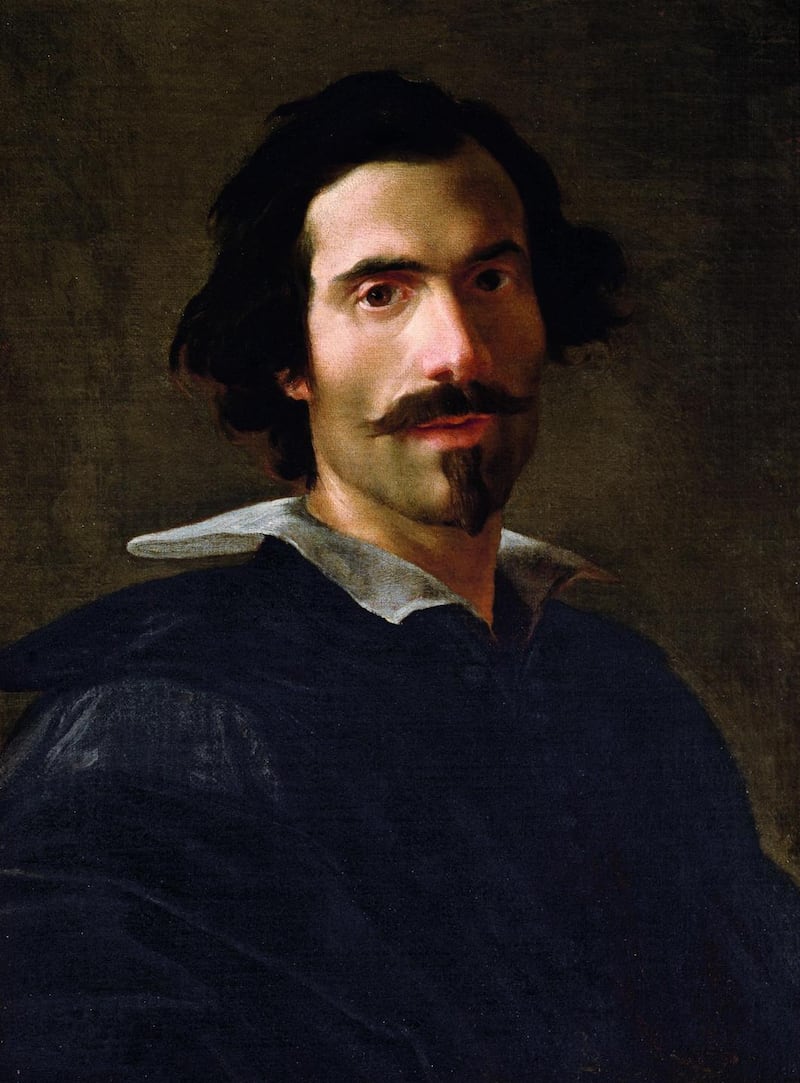In the story told by the Roman poet Ovid, Medusa was a beautiful young woman with many suitors. For an imagined slight the goddess Athena turned her long blonde tresses into writhing snakes.
Gian Lorenzo Bernini captured the moment of transition as Medusa's hair becomes a tangled coil of vipers in tawny-coloured marble. Her open-mouthed expression conveys shock and horror at what is happening to her.

Visitors face Medusa’s head as they enter the Caravaggio-Bernini, Early Baroque in Rome exhibition at the Rijskmuseum. The sculpture is so vivid, so realistic, that one almost fears Athena’s curse, which turned all who looked at Medusa into stone.
The highest goal of Baroque art was to provoke emotion, and the exhibition is organised around the themes expounded by contemporary theoreticians. These included meraviglia (wonderment), stupore (astonishment), orrore (horror), terribilità (awesomeness), passione, compassione and vivacità (lifelikeness).
The head of Medusa achieves another goal of Baroque art by portraying that vertiginous moment of action when an event tips into salvation or disaster.
Medusa is also a visual allusion to Caravaggio, the first Baroque artist, born in 1571, 27 years before Bernini. Decades before Bernini’s sculpture, Caravaggio painted similar heads of Medusa.
Commissioners gave Caravaggio top billing because he is better known to the public than Bernini. He so profoundly influenced painters of the first half of the 17th century that they adopted his name, calling themselves Caravaggisti. All imitated the master’s hallmark technique of chiaroscuro or tenebrism, the use of intense contrasts between light and shadow for dramatic effect.
Male models
In Boy Bitten by a Lizard, one of the handsome, effeminate male models who established Caravaggio’s reputation for homoeroticism reaches for two cherries on a table, as a black lizard clamps on to his middle finger. The boy recoils in pain, his brow furrowed and fingers splayed. A contemporary remarked that one can almost hear him scream. His white shirt falls sensuously off his shoulder. Curiously the boy looks at us, not the lizard.
Boy Bitten by a Lizard conveys another idea espoused by Baroque artists; in the words of the poet Giambattista Marino, “That even a tragic event is a precious subject/And horror oft-times accompanied by delight.”
Baroque paintings of Judith beheading Holofernes are not for the faint-hearted. In Orazio Gentileschi’s Judith and Her Maidservant with the Head of Holofernes, the Old Testament widow has just decapitated the Assyrian general she seduced to save her people. The murder weapon, the victim’s sword, extends from her right hand. The dark green curtain, Judith’s red dress and her servant Abra’s blue and gold clothing are in the rich, clear palette of Gentileschi’s native Tuscany.
Abra holds the severed head in a wicker basket. Both women look to the right, as if listening for the approach of Assyrian soldiers. Holofernes’s blood drips through the basket onto the white cloth meant to be used to cover the severed head.
Caravaggio’s father died when he was six, his mother when he was 13. He fled his native Milan in 1592, when age 21, after a violent argument in which the painter wounded a police officer. Several 17th century historians recorded that he arrived in Rome naked, homeless and in extreme poverty.

Street brawls
Caravaggio became an aficionado of Roman street brawls even as he built a reputation for dramatic religious paintings featuring decapitations, torture and death. He used a prostitute as a model for the Virgin.
Speculation regarding Caravaggio's sexuality continues to this day. He did not marry and had no children. Louis Crompton, a Canadian-born scholar and pioneer of queer studies, wrote of Caravaggio's "full-lipped, languorous boys . . . who seem to solicit the onlooker with their offers of fruit, wine, flowers – and themselves".
“There are two sources for Caravaggio’s homosexuality,” says Duncan Bull, senior curator for foreign paintings at the Rijksmuseum.
“One is that he painted pretty boys in provocative positions. The second is that we know homosexuality was fairly widespread at the time, and it was quite normal to sleep with your apprentice. An English visitor to Rome alluded to ‘Caravaggio and his boy Cecco, who lay with him’.”
Though sodomy was a capital offence in 17th century Rome, “in a city filled with bachelor clergymen and choirboys”, says Bull, “the inevitable was going to happen”.

In 1606, Caravaggio killed a man, and fled to Naples with a death sentence hanging over him. He left a few months later for Malta, where he was arrested and imprisoned in 1608 for seriously wounding a knight in yet another altercation. He escaped back to Naples, and was heading for Rome to seek a papal pardon when he died mysteriously in 1610.
“Caravaggio wasn’t that bad. He was just outrageous,” Bull says with a laugh.
“He was always in trouble, and he offended people greatly. He was a difficult sort of chap, a show-off. Bernini was a show-off in a different sort of way. He played the grand seigneur.” Witness the gilt bronze heads of screaming men which Bernini crafted as ornaments for his Roman carriage, on display at the Rijksmuseum.
Plague
Life in the 17th century was dangerous and short. Whole cities were decimated by plague. Violence marked the lives of other artists, not just Caravaggio.
Artemisia Gentileschi, the daughter of Orazio and a fine painter in her own right, was raped by Agostino Tassi, the tutor Orazio hired to teach her painting. She sued Tassi, but was forced to endure a humiliating gynaecological examination, and was tortured to ensure she was telling the truth. Tassi got one year in prison.
When the painter Domenico Zampieri, known as Domenichino, won a commission for frescoes in Naples, he received death threats from local artists, who pushed him off the scaffolding of the cathedral.
“Real mafia stuff,” says Bull.

A portrait of papal secretary Giovanni Batista Agucchi is attributed to Domenichino, though some believe it may have been painted by Annibale Carracci. As author of the Trattato della pittura, Agucchi was a leading theoretician of Baroque painting. He was close to the Caravaggisti, and the portrait of Agucchi looking up from the letter he is reading is a fine example of the lifelikeness which they aspired to.
To be able to depict a pained face, Bernini is said to have studied himself in a mirror while burning himself with hot coals. Even he, establishment figure and the leading architect of Baroque Rome, blotted his record with a horrific incident of violence.
There is emotion in Bernini’s 1638-40 self-portrait. One wonders if it is related to his affair with Costanza Bonarelli, the wife of an assistant.
When Bernini learned that Costanza was also having an affair with his younger brother Luigi, he nearly killed his brother, and sent a servant to slash Costanza’s face with a razor. The servant and Costanza were jailed, but Bernini received exoneration from the pope. Some have noticed a resemblance between Bernini’s bust of Costanza and the features of his Medusa.
Love stories
Violence permeates even the love stories told in these paintings. Gentileschi’s Sacrifice of Isaac is a tale of divine and filial love. Yet the painter shows Abraham gripping the knife with which he is about to stab Isaac. The angel and Abraham lock eyes as the angel points heavenward.
This is the moment of hesitation, when Abraham is confused by God’s conflicting orders. Gentileschi uses chiaroscuro to dramatic effect, creating a strong diagonal line across the canvas, from the angel sent by God to stop the sacrifice, to the patriarch and Isaac.
Armida and Rinaldo, beautifully rendered by Poussin, also shows the tipping point between love and killing. As told in an epic poem by Torquato Tasso, Armida was a Saracen witch who intended to murder the crusader Rinaldo as he slept. But at the last moment Cupid holds back Armida's right arm, which bears a dagger. The left hand which was meant to seize Rinaldo's head caresses him instead.

Half a century before the Caravaggisti, the Council of Trent ordered artists to find new ways to play on the emotions of believers. Cardinal Gabriele Paleotti told them to use depictions of the suffering of Christ and Christian martyrs to increase devotion.
Caravaggio’s The Crowning with Thorns shows henchmen beating the thorns down on to Christ’s head. His muscular body slumps forward. His face is beaten, resigned. A soldier in the left foreground leans on a parapet, his hand close to Christ’s hand, seeming to indicate compassion.
Annibale Carracci’s Dead Christ Mourned, also known as the Three Marys, is a painting of utter, inconsolable grief. The dead Christ lies across the bottom of the canvas, in the arms of the swooning Virgin, whose grey pallor resembles Christ’s.
The composition leads the eye up to the anguished face of Mary Salome, who supports the weight of the Virgin, then across to Mary Cleophas, the mother of James the younger, and finally to Mary Magdalene, dressed in red and gold, throwing her hands up in despair.
Psychology
Yet despite their biblical content, these paintings seem almost irreligious. The Caravaggisti succeeded so well in conveying emotion that psychology overwhelms the sacred.
A series of canvases on the theme of doubting Thomas again display the Caravaggistis’ taste for gruesome subjects.
Spadarino, whose real name was Giovanni Antonio Galli, painted Christ Displaying his Wounds, perhaps the most haunting picture of the exhibition.
Thomas is absent from Spadarino’s dramatic portrayal of Christ, standing half-wrapped in his shroud, pulling his side wound apart, his hands marked by bitter nail holes. Four centuries after it was painted the wound looks fresh, the blood wet and sticky. We, the viewer, have replaced Thomas. “Do you believe me now?” the resurrected Christ seems to say.
Caravaggio-Bernini, Early Baroque in Rome is at the Rijskmuseum, Amsterdam, until June 7th

















